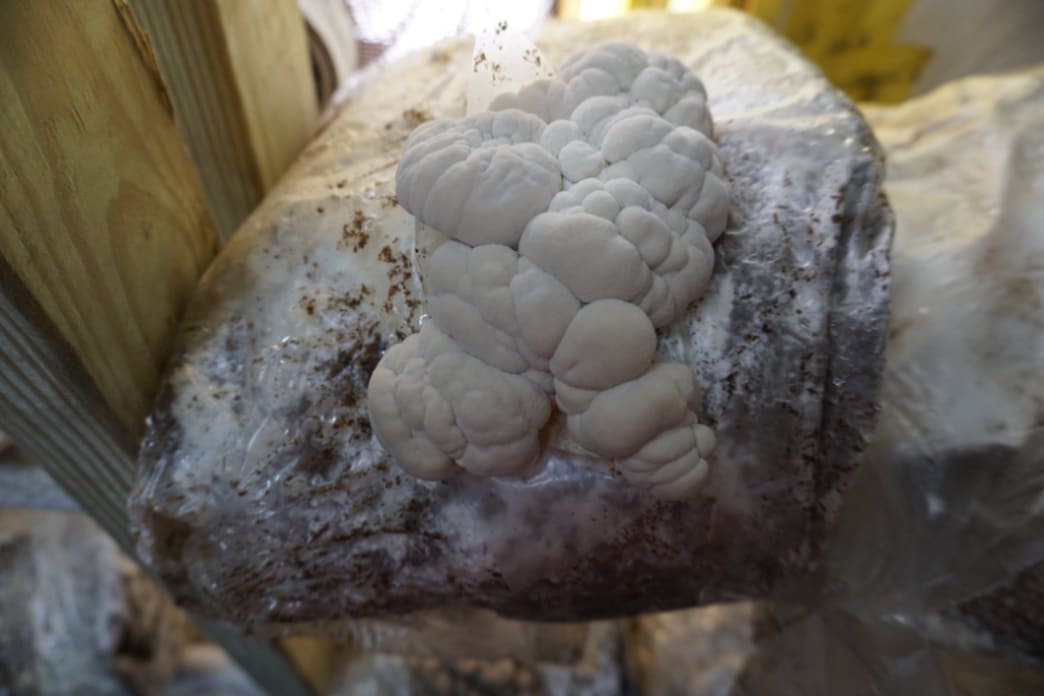We’ve scoured the web and experimented in the kitchen to bring you a collection of lion’s mane mushroom recipe options that are worthy of gracing your plate
What’s your favorite mushroom to make a meal with? Many people will say shiitakes or morels, while others still will opt for the coveted chicken of the woods. However, some of us will always turn towards lion’s mane before all other mushrooms.
Today we are running through some popular methods for cooking lion’s mane at home. Then we get into some amazing lion’s mane mushroom recipe options that will make your stomach roar with delight.
Fresh lion’s mane are ideal for these lion’s mane mushroom recipe recommendations
Lion’s mane isn’t the easiest mushroom to find. In fact, it can be a difficult mushroom to procure. We can find them from time to time here in the northeast while foraging in the forest, but they are pretty rare. Even if someone is lucky enough to find a lion's mane growing on an old beech tree, there is a good chance that the mushroom will already be claimed by bugs. Lion’s mane mushrooms have benefits and are so delicious that even the insects can’t pass up the opportunity of feasting on those inviting pom poms.
If you can’t find lion’s mane in the wild in your local grocery store, you can still try a local farmers’ market in your area. Some small-scale mushroom farmers provide their lion’s mane bounties in these locations. We’ve even sold lion’s mane sawdust spawn and grain spawn to small-scale mushroom farmers to sell in these exact locations. Some of these mushroom farmers have been reported back that they are able to sell their organic lion’s mane for $20 per pound!
Can’t find lion’s mane at the grocery store, in the woods, or at the local farmers’ market? Well, you can still be in luck! We sell lion’s mane mushroom growing kits to customers throughout the United States. Each one of our lion’s mane mushroom growing kits is 10 pounds of colonized hardwood sawdust and certified organic. You are not only getting one of the largest kits available, but it’s also organic! This kit will produce up to five pounds of fresh mushrooms throughout multiple flushes. This kit is an amazing deal!
How to use the lion’s mane growing kit: First, take the bag and place it in the area you plan on growing. You can do it from the comfort of your home, or outside if weather permits. If doing it inside, you will need to place it in a room with enough light to comfortably read.
Next, you will want to dial in the ideal temperature and humidity. The ideal temperature for lion’s mane to fruit is 65-70 degrees F.
Cut six V-shapes throughout the surface of the bag; two v-shapes on each broad side of the kit and one on each of the narrower sides. These holes are where the lion’s mane mushrooms will fruit out of. Begin to spray the kit two or three times each day so it remains moist. The ideal humidity is 85% or higher. You do not want the kit to dry out. It will take about 10-14 days until the mushrooms are ready to be harvested. The mushrooms are ready to harvest once the spines cascade down towards the fruited body.
Ways of cooking lion’s mane mushrooms at home: Sautéing, baking or broiling
Before we get to our favorite lion’s mane mushroom recipe suggestions, let’s look at some cooking methods.
Sautéing mushrooms is one of the desired processes for many. You can use butter, ghee, olive oil, or another cooking oil. Begin by heating the cooking oil or fat and then place the mushrooms into the pan. You can sauté the mushrooms uncovered on medium heat. The mushrooms are ready to eat once they become tender. You can add salt and pepper to taste before serving.
Baking is the next option. Cut your lion’s mane into slices and coat the mushrooms with olive oil. You can season them as you wish, but some simple recommendations are paprika, salt, and pepper. Preheat your oven to 350 degrees Fahrenheit. Once your oven is properly heated, place the mushrooms on a baking sheet in the oven and bake for 20-30 minutes, until the mushrooms are crispy and before they burn. Let them cool down and then enjoy.
Broiling is a similar process as baking, so prepare the lion’s mane in the same manner. Place the mushrooms in a large bowl with salt, pepper, cooking oil, and some sherry. Arrange the coated mushrooms on a baking tray in a single layer. Broil the mushrooms for about two and half minutes, then flip the mushrooms over and broil for an additional minute and a half. Your broiled mushrooms will then be ready to serve.
Our 5 favorite lion’s mane mushroom recipe recommendations to try
Try all of these lion's mane mushroom recipe suggestions!
Lion’s Mane Crab Cakes. Check out this recipe at Aubrey’s Kitchen.
Blackened Lion’s Mane Mushroom Steaks. Try this recipe from Trimazing.
Lion’s Mane Mushroom Fritters. Use this recipe from Realtree.
Roasted Lion's Mane Mushrooms with Sherried Shallots. Use MyRecipes to try this one.
The Lion’s Mane Mushroom Swiss Burger from 918Plate may be my favorite among the bunch.
What’s your favorite lion’s mane mushroom recipe?

